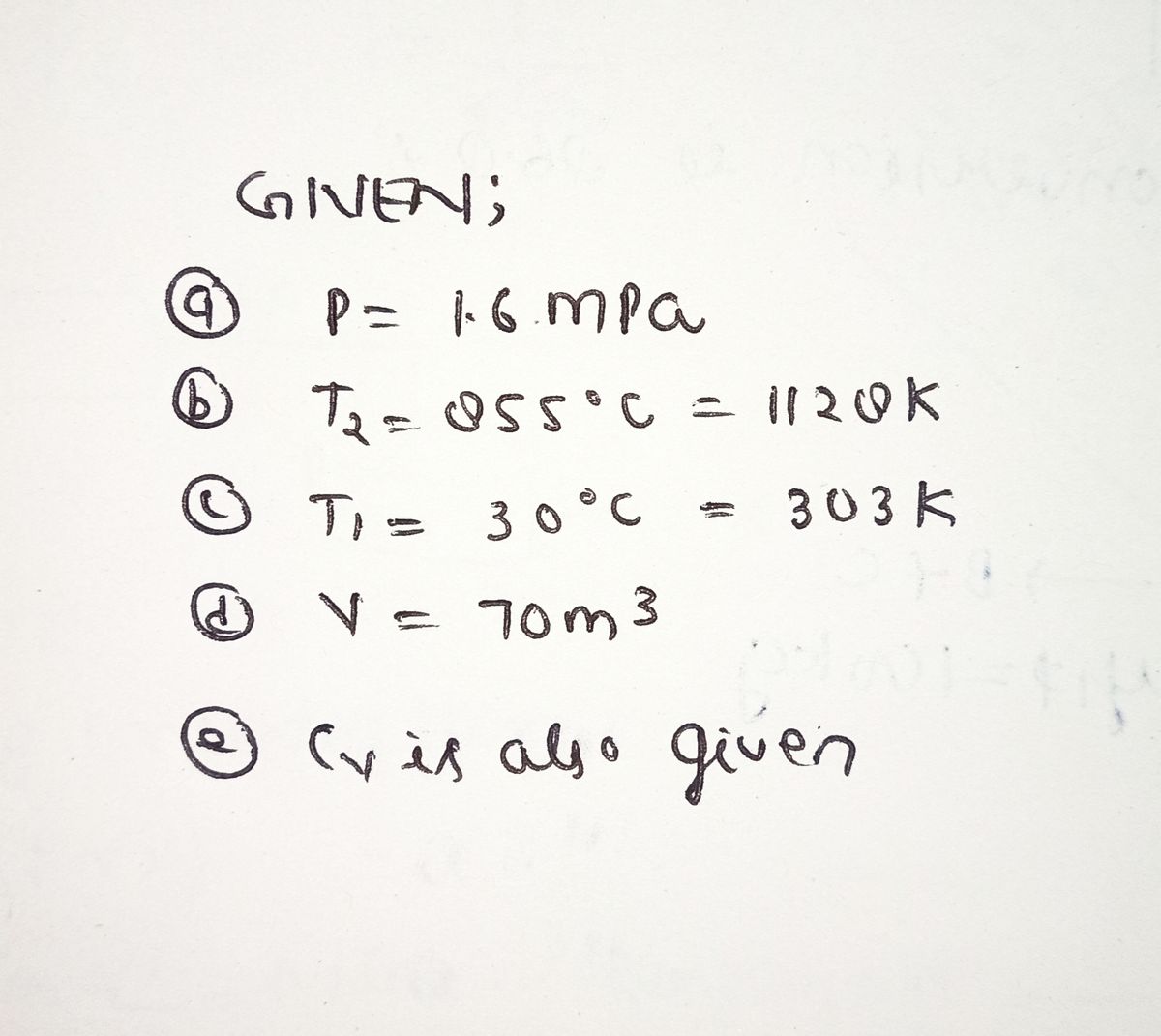2. Hydrogen produced by steam-methane reforming exits at a pressure of 1.6 MPa and a temperature of 855°C. The hydrogen is stored in a metal hydride tank with a volume of 70 m³ and must be cooled down to a temperature of 30°C before being fed to a proton exchange membrane fuel cell. Determine the amount of heat transferred in cooling down the hydrogen obtained from the steam-methane reforming process. Assume hydrogen gas behaves ideally that the constant-volume heat capacity of hydrogen is given by the following equation: kJ mal °C C₂ ( 13 2.053x10-2 +7.650x10-6 T+3.288×10-9 T² -8.698x10-73
2. Hydrogen produced by steam-methane reforming exits at a pressure of 1.6 MPa and a temperature of 855°C. The hydrogen is stored in a metal hydride tank with a volume of 70 m³ and must be cooled down to a temperature of 30°C before being fed to a proton exchange membrane fuel cell. Determine the amount of heat transferred in cooling down the hydrogen obtained from the steam-methane reforming process. Assume hydrogen gas behaves ideally that the constant-volume heat capacity of hydrogen is given by the following equation: kJ mal °C C₂ ( 13 2.053x10-2 +7.650x10-6 T+3.288×10-9 T² -8.698x10-73
Introduction to Chemical Engineering Thermodynamics
8th Edition
ISBN:9781259696527
Author:J.M. Smith Termodinamica en ingenieria quimica, Hendrick C Van Ness, Michael Abbott, Mark Swihart
Publisher:J.M. Smith Termodinamica en ingenieria quimica, Hendrick C Van Ness, Michael Abbott, Mark Swihart
Chapter1: Introduction
Section: Chapter Questions
Problem 1.1P
Related questions
Question
Energy question

Transcribed Image Text:2. Hydrogen produced by steam-methane reforming exits at a pressure of 1.6 MPa and a
temperature of 855°C. The hydrogen is stored in a metal hydride tank with a volume of 70 m³
and must be cooled down to a temperature of 30°C before being fed to a proton exchange
membrane fuel cell. Determine the amount of heat transferred in cooling down the hydrogen
obtained from the steam-methane reforming process. Assume hydrogen gas behaves ideally
that the constant-volume heat capacity of hydrogen is given by the following equation:
kJ
mal °C
C₂ (
13
2.053x10-2 +7.650x10-6 T+3.288×10-9 T² -8.698x10-73
Expert Solution
Step 1

Step by step
Solved in 2 steps with 2 images

Recommended textbooks for you

Introduction to Chemical Engineering Thermodynami…
Chemical Engineering
ISBN:
9781259696527
Author:
J.M. Smith Termodinamica en ingenieria quimica, Hendrick C Van Ness, Michael Abbott, Mark Swihart
Publisher:
McGraw-Hill Education

Elementary Principles of Chemical Processes, Bind…
Chemical Engineering
ISBN:
9781118431221
Author:
Richard M. Felder, Ronald W. Rousseau, Lisa G. Bullard
Publisher:
WILEY

Elements of Chemical Reaction Engineering (5th Ed…
Chemical Engineering
ISBN:
9780133887518
Author:
H. Scott Fogler
Publisher:
Prentice Hall

Introduction to Chemical Engineering Thermodynami…
Chemical Engineering
ISBN:
9781259696527
Author:
J.M. Smith Termodinamica en ingenieria quimica, Hendrick C Van Ness, Michael Abbott, Mark Swihart
Publisher:
McGraw-Hill Education

Elementary Principles of Chemical Processes, Bind…
Chemical Engineering
ISBN:
9781118431221
Author:
Richard M. Felder, Ronald W. Rousseau, Lisa G. Bullard
Publisher:
WILEY

Elements of Chemical Reaction Engineering (5th Ed…
Chemical Engineering
ISBN:
9780133887518
Author:
H. Scott Fogler
Publisher:
Prentice Hall


Industrial Plastics: Theory and Applications
Chemical Engineering
ISBN:
9781285061238
Author:
Lokensgard, Erik
Publisher:
Delmar Cengage Learning

Unit Operations of Chemical Engineering
Chemical Engineering
ISBN:
9780072848236
Author:
Warren McCabe, Julian C. Smith, Peter Harriott
Publisher:
McGraw-Hill Companies, The